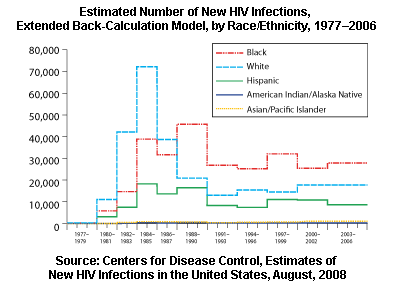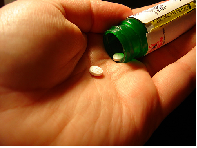|
Greetings from the CEO Fall, 2008
Dear Visitor:
I’m excited to report that AIDS Research Alliance continues to attract more and more friends from the scientific community—experts who agree with us that we must uncover the answer to one critical research question:
How can we flush HIV from its hiding places in the body — called “reservoirs”— so current HIV treatments can eradicate it completely?
Indeed, current HIV treatments only reduce “free floating” virus in the blood; they don’t reach HIV lying dormant in the body’s reservoirs.
How to solve this “latency” problem was the topic of a recent, invitation-only meeting of the respected HIV Forum of George Washington University this July. A select handful of leading HIV scientists gathered to discuss this pivotal question and among the invited guests were our Medical Director, Stephen Brown, M.D., and our Scientific Director, Marjan Hezerah, Ph.D. In short, it’s very clear that AIDS Research Alliance’s work on this critical issue sits firmly on the cutting-edge of HIV science.
While the brilliance of our scientific team carried them to that invitation-only table, your support of AIDS Research Alliance was a key ingredient, too. You should be very proud of this accomplishment, because your support made it happen. I hope AIDS Research Alliance can continue to rely on your support to advance our pioneering efforts.
Thanks for your continued and generous support!
With every good wish,
 Carolyn H. Carlburg, J.D. Carolyn H. Carlburg, J.D.
Chief Executive Officer
|
Higher Rates of HIV Infection Reported
|
|
A wave of recent studies brings troubling news that U.S. HIV infection rates may have been underestimated by as much at 40%, particularly among African-Americans and men who have sex with men (MSM). As many as 58,500 people each year are becoming newly infected with HIV in America, rather than the 40,000 estimated in prior Centers for Disease Control and Prevention (CDC) reports.

The new CDC study, published in the August issue of The Journal of the American Medical Association, indicates that HIV incidence (the number of new HIV infections occurring in a given time period) has been higher than previously thought for at least a decade.
Dr. Stephen J. Brown, Medical Director at ARA said “This study lifts the veil on just how serious a threat AIDS continues to pose in the United States.”
These startling numbers highlight the need for expanded access to HIV testing, more rigorous tracking and reporting standards nationwide, and an even greater sense of urgency to develop and test new drug candidates, vaccine candidates, and prevention methods.
The revised numbers are due to better reporting, rather than increased risk behavior. The study relies on reporting advances on two fronts:
• A breakthrough testing technology that allows researchers to see which HIV infections are new, i.e., those that occurred within approximately the last five months.
• An expanded HIV reporting system in the U.S., and new statistical methods that examined historical trends in HIV infections.
By combining these methods, CDC was able to track new infections for the first time.
In a statement, the CDC says, “this combined approach will allow CDC to better monitor the current course of the epidemic, target prevention efforts where they are needed most, and assess the impact of prevention efforts.” In the next year, CDC expects further information to come out of the study, including more reliable figures on the total number of people infected nationwide. The statement goes on to caution that the numbers do not represent a rise in the number of cases, and that the new analysis shows that infection rates have been relatively steady over the last decade.
“This is yet another – louder – wake up call that the US must do better in the prevention, diagnosis, and treatment of this disease. As a nation, we must fund the research that will help us turn these infection rates around,” stated Carolyn H. Carlburg, J.D., CEO. |
The Morning Before Pill: A New Tool in the Prevention Arsenal?
|

A Morning Before Pill? Looking At New Tools For Prevention
With the HIV vaccine research community still reeling from last year's Merck vaccine trial closure - and more new infections being reported across the U.S. - other new approaches are generating tremendous public interest. This includes pre-exposure prophylaxis (PrEP), in which antiretroviral drugs are used before potential HIV exposure to reduce the likelihood of infection.
The approach isn't new: anti-malarial drug regimens rely on the same basic premise of loading the body with drugs to fight off infection before a patient encounters the infectious agent. Theoretically, if HIV replication can be stopped from the moment the virus enters the body, it may not be able to establish a permanent infection.
"We know that behavioral interventions (Such as abstinence, condom use, and needle hygiene) can be effective in preventing HIV infection; however, they aren't always used, are not universally available, and have not been able to contain the pandemic," stated Dr. Marjan Hezareh, ARA Scientific Director
In fact, with 7,400 new infections occurring every day, new (and combined) prevention approaches are desperately needed, and HIV researchers must turn their focus to studying the use of currently available antiretrovirals as a preventive method.
This was just the recommendation made last month at the 17th Annual International AIDS Conference by the AIDS Vaccine Advocacy Coalition. With PrEP clinical trials currently planned or underway in Africa, Asia, Latin America and North America, the Coalition called for increased action from governments, global health institutions and researchers to prepare as early data from those trials comes in - expected as early as 2009 - from these first trials.
Although it is still unproven in human trials, already there is some evidence that PrEP works: providing antiretrovirals to HIV-infected women during labor and delivery and to their newborns immediately following birth has been shown to reduce the risk of mother-to-child transmission by about 50. A safe and effective PrEP therapy would likely be targeted to men who have sex with men (MSM), female partners of MSM, and intravenous drug users and their partners. Other individuals who might be considered for PrEP would be those placed in situations or locations where risk of HIV acquisition might be heightened for a period of time, such as prisoners, commercial sex workers, or those trying to conceive with an HIV+ partner.
Once study results are available, and the risks and benefits carefully considered, the important task of implementing this possible new therapy can begin.
|
| The Combined Federal Campaign: What "12134" Means to ARA |
|
If you’re a government employee (or know one), you probably know about the Combined Federal Campaign. Every year forest rangers, marines, librarians, school teachers, NASA techs, postal workers and many others contribute from their payroll as part of the world's largest and most successful workplace charity campaign. From September thru December 15th, federal, state and municipal employees across the nation, as well as overseas, are asked to donate a portion of their wages to U.S. charities.
Charities chosen for the CFC must meet strict guidelines to participate, including show evidence that they are providing services on a national or international level; that they abide by public and financial accountability guidelines; and that they provide complete transparency with regard to how much money they spend on overhead (for instance, AIDS Research Alliance spends nearly .85 cents of every dollar received on research and education.)
Whether you work for a federal, state or municipal agency or donate through the United Way, please consider donating to ARA through your workplace giving campaign. (In the CFC, we can be found at 12134.)
To find out how you can donate through your workplace – or to see whether your employer supports and matches your donations to ARA – please contact our Development Assistant, Gwendolyn Martin at 310-358-2423, or at gmartin@aidsresearch.org. |
Tara: Still Living Her Dreams
|
|

"My name is Tara and I am living with HIV. This is an era of people who are living with HIV/AIDS instead of dying. I am a college student in Florida who loves to teach and play music. My goal is to become a teacher somewhere in Mexico. I will turn 30 this year! Why is this such a celebration? I have been diagnosed with AIDS for 15 years coming this November. I was 15 years old when I was told the news. I received a blood transfusion in 1984, and received tainted blood. My family didn't know about it until years later when I got sick in 1992. Doctors gave me six months. I think they stopped counting after I turned 21. = )
My family and I have gone through hard times with discrimination in the early ‘90's and sometimes even now! Yet, my faith and my medical therapy have pulled me through. My point to this story is you don't give up on your dreams from a test. I have beaten so many odds and I'm still living my dreams."
- Tara R.
HIV+ since 1996 |
|
| Volunteer at AIDS Research Alliance |
|
Are you interested in volunteering at AIDS Research Alliance? Would like to help our office staff and are able to donate your time during the work week? If so, please contact our volunteer manager, Teaa Bradley, at 310-358-2423 for more information on the work we currently have available, as well as events we have scheduled in the future. We’d love to have your helping hand!
|

AIDS RESEARCH ALLIANCE
621-A North San Vicente Blvd.
Clinic: 310.358.2429 / Admin: 310.358.2423
|
|


